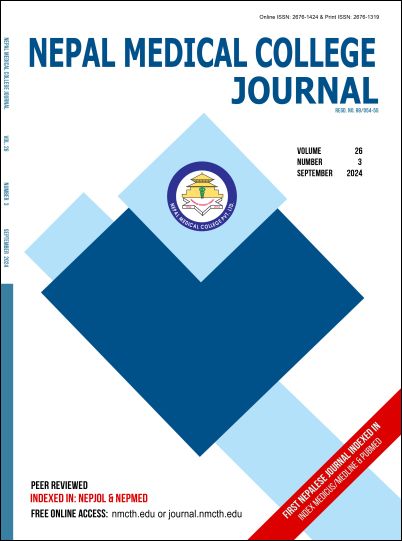Association Between Deviated Nasal Septum and Function of Eustachian Tube among Patients Attending a Tertiary Care Center
DOI:
https://doi.org/10.3126/nmcj.v26i3.69882Keywords:
Nasal septum, Eustachian tube, associationAbstract
Deviated nasal septum is the most common cause of severe and chronic nose blockage. The eustachian tube (ET) is a tube that connects the middle ear cavity and the nasopharynx and provides middle ear ventilation. The relationship between DNS and ETF is controversial in medical literature. This study tried to find the association between deviated nasal septum and function of eustachian tube. This prospective study was conducted in Nepal Medical College Teaching Hospital, Otorhinolarynology Department from November 2022 to October2023 after acquiring ethical clearance from Institutional Review Committee. All the patients presenting to the outpatient clinic over the age of 19 with deviated nasal septum (DNS) were included. Statistical analysis was done using SPSS. A p value of < 0.05 was considered statistically significant. Our study had 71 males (54.6%) and 59 females (45.4%) with mean age 37.2±15.9 years. Of 130 patients, 56 (43.1%) had DNS to right side while 74 (56.9%) to left. All patients had moderate DNS. Age group, gender, and laterality of DNS of the patient did not show any significant association with ETDQ7 score, tympanograms and middle ear pressures on either side. Moderate DNS did not affect ETF in a significant way.
Downloads
Downloads
Published
How to Cite
Issue
Section
License
Copyright (c) 2024 Nepal Medical College Journal

This work is licensed under a Creative Commons Attribution 4.0 International License.
This license enables reusers to distribute, remix, adapt, and build upon the material in any medium or format, so long as attribution is given to the creator. The license allows for commercial use.




